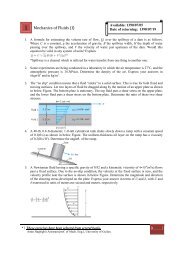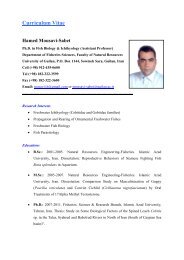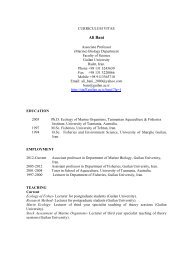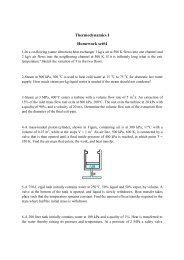Medical Tourism in Developing Countries
Medical Tourism in Developing Countries
Medical Tourism in Developing Countries
- No tags were found...
You also want an ePaper? Increase the reach of your titles
YUMPU automatically turns print PDFs into web optimized ePapers that Google loves.
Offshore Doctors ● 49the closest facilities, immediately across the border from their homes. Theyalso do not vacation before or after their medical treatment. Their demandis for nonelective medical care, as they have neither the time nor the <strong>in</strong>cl<strong>in</strong>ationfor elective or lifestyle medic<strong>in</strong>e. While all countries under studyhave border medic<strong>in</strong>e, Thailand’s border regions are <strong>in</strong>undated by poorpatients from neighbor<strong>in</strong>g countries. 27 Chile also has ample border medicaltourism and is brac<strong>in</strong>g for more when the <strong>in</strong>ternational highway connect<strong>in</strong>gnorthern Argent<strong>in</strong>a, eastern Bolivia, and western Brazil is completed.Two clarifications are <strong>in</strong> order. First, while border medic<strong>in</strong>e tends toattract the poor <strong>in</strong> neighbor<strong>in</strong>g countries, this does not imply that the rich<strong>in</strong> those neighbor<strong>in</strong>g countries do not travel to the same dest<strong>in</strong>ation formedical care. To the contrary, there is evidence of luxury medical travelfrom neighbors of all the countries under study. Indeed, India receivespatients from the Gulf States as well as nearby Bangladesh, Mauritius,Nepal, and Sri Lanka. Chile and Argent<strong>in</strong>a both provide medical servicesto neighbor<strong>in</strong>g residents, as their medical systems are more sophisticatedand modern. Most of the demand for first-rate medical centers <strong>in</strong> Chilecomes from upper <strong>in</strong>come and upper-middle <strong>in</strong>come patients from Boliviaand Peru, and to a lesser extent, from Ecuador. 28 However, the wealthypatients will rarely receive medical care <strong>in</strong> the border areas, but will <strong>in</strong>steadbe drawn to the large medical centers that tend to be urban or resortbased.Second, not all border medic<strong>in</strong>e is demanded by residents of develop<strong>in</strong>gcountries. A study of trade <strong>in</strong> health services <strong>in</strong> Tijuana <strong>in</strong> 1994 notes thaton average, there were 300,000 health related border cross<strong>in</strong>gs per month. 29Only 50,000 were people go<strong>in</strong>g to San Diego for health care while therema<strong>in</strong><strong>in</strong>g 250,000 went from the United States to Tijuana. In fact, tens ofthousands of California workers get their medical and dental checkups, aswell as major treatment and surgeries, <strong>in</strong> Mexico, where health care ischeaper. 30 Also, Americans have been go<strong>in</strong>g to Mexico for medical servicesand cheap drugs for a long time. 31The Price of <strong>Medical</strong> Care as a Pull and a PushAs per microeconomic theory, the quantity demanded of medical tourism,just like any other good or service, is determ<strong>in</strong>ed by price. When foreignerstravel to develop<strong>in</strong>g countries to partake of their health-care services, theyhave undoubtedly been lured by low prices. Just how low are these prices?That question is answered below from the po<strong>in</strong>t of view of the patient,namely, how much does the patient spend and what does he get for hiscash outlay. In chapter 4, the low prices of medical tourism are studied from
















